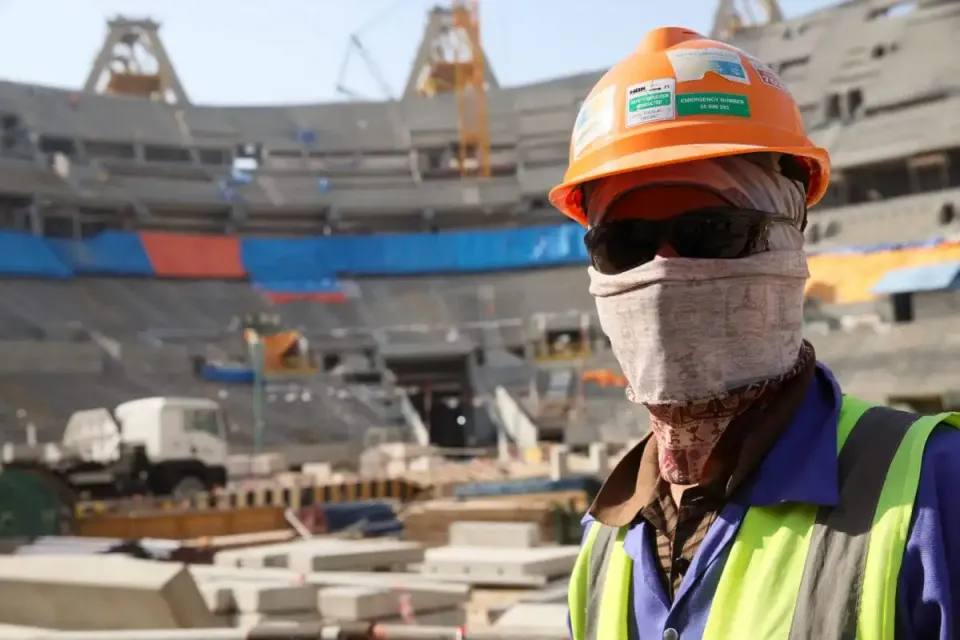Bangladeshi Migrant Workers: A Backbone of the Global Labor Market

Bangladeshi migrant workers have earned a reputation as one of the most hardworking, honest, and reliable labor forces worldwide. Contributing significantly to the economies of their host countries and their homeland, these workers embody resilience and dedication, despite facing numerous challenges.
The Global Reach of Bangladeshi Workers
Bangladeshi migrant workers are found in almost every corner of the globe, with a predominant presence in the Middle East, Southeast Asia, and Europe. In countries like Saudi Arabia, the UAE, and Qatar, they are the backbone of the construction and service industries. In Malaysia and Singapore, Bangladeshi workers dominate the plantation, manufacturing, and construction sectors. In Europe, particularly in Italy and Greece, they play an essential role in agriculture and small-scale industries.
According to the International Labour Organization (ILO), over 13 million Bangladeshi workers are employed overseas. Their adaptability, endurance, and work ethic make them indispensable in industries requiring physical labor and long hours.
Global Ranking of Bangladeshi Migrant Workers
Bangladeshi migrant workers hold a unique position in the global labor force:
- Top Remittance-Earning Nations: Bangladesh ranks among the top 10 countries in terms of remittance earnings globally, showcasing the financial impact of its migrant workforce.
- Largest Migrant-Sending Countries: According to the World Migration Report 2022, Bangladesh is one of the largest exporters of labor in the world, particularly to the Middle East and Southeast Asia.
- Key Contributor in Construction: Bangladeshi workers are ranked among the most significant contributors to the construction sector in Gulf countries, where their role in infrastructure projects is indispensable.
- Recognition for Work Ethic: Surveys by international recruitment firms highlight Bangladeshi workers as one of the most reliable and hardworking migrant groups globally.
Why Bangladeshi Workers Excel
Several traits set Bangladeshi workers apart in the global labor market:
- Resilience: Many Bangladeshi workers are accustomed to working in harsh environments, such as extreme heat in the Gulf or demanding conditions in agriculture and construction.
- Loyalty and Honesty: Employers across various industries commend Bangladeshi workers for their dedication and trustworthiness. A 2023 report by the Migration Policy Institute (MPI) highlighted that Bangladeshi workers are preferred for their reliability and integrity.
- Long-Term Commitment: Unlike workers from other countries who frequently change jobs, Bangladeshi migrants often remain with the same employer for years, reducing turnover and fostering stable relationships.
- Adaptability: Employers in Malaysia, Singapore, and beyond praise Bangladeshi workers for their ability to adapt to new cultures, languages, and work environments.
Economic Impact on Bangladesh
Remittances from migrant workers are a cornerstone of Bangladesh’s economy. In 2024, Bangladeshi workers sent home a record $26.4 billion, accounting for 6.1% of the nation’s GDP, according to the World Bank. These funds significantly improve the lives of millions of families and bolster rural economies.
The government of Bangladesh recognizes the importance of its diaspora. Efforts are being made to streamline migration processes, reduce recruitment costs, and enhance the welfare of workers abroad.
Challenges Faced by Bangladeshi Migrants
Despite their immense contributions, Bangladeshi workers face several challenges:
- Exploitation: A report by Amnesty International detailed cases of wage theft, unsafe working conditions, and exploitative practices, particularly in the Middle East.
- High Recruitment Fees: Many workers incur significant debts to secure jobs abroad, with recruitment fees often exceeding $3,000.
- Limited Skill Recognition: Most Bangladeshi migrants work in low-skill jobs, which limits their earning potential and upward mobility.
- Legal Vulnerabilities: Many workers lack access to adequate legal protections in host countries, leaving them vulnerable to abuse.
Global Recognition of Bangladeshi Workers
International organizations and research institutes consistently highlight the positive contributions of Bangladeshi migrants:
- Gulf Labour Markets and Migration (GLMM): In a recent study, GLMM emphasized the pivotal role of Bangladeshi workers in the Gulf region’s infrastructure development.
- European Union Agency for Fundamental Rights (FRA): FRA’s research acknowledged Bangladeshi migrants’ significant role in the agriculture sectors of Italy and Greece.
- ILO’s 2023 Report: The report praised Bangladeshi workers for their resilience and reliability, qualities that make them highly sought-after globally.
Testimonials from Employers
- A construction manager in Qatar stated: “Bangladeshi workers are the backbone of our projects. They work tirelessly to meet deadlines and maintain high-quality standards.”
- In Singapore, a factory owner remarked: “Their discipline and adaptability set them apart. Bangladeshi workers are invaluable to our operations.”
Steps Toward Improvement
To maximize the potential of Bangladeshi workers and address the challenges they face, several measures are being implemented:
- Skill Development: Organizations like the International Organization for Migration (IOM) are partnering with the Bangladeshi government to provide pre-departure training, focusing on technical skills and language proficiency.
- Bilateral Agreements: Recent discussions between Bangladesh and Malaysia aim to streamline the recruitment process, reduce fees, and ensure better working conditions for Bangladeshi workers.
- Enhanced Legal Protections: Advocacy groups are pushing for stronger legal frameworks to protect migrant workers’ rights in host countries.
The Future of Bangladeshi Migrants
The global demand for Bangladeshi workers is expected to grow, particularly in sectors like construction, manufacturing, and agriculture. With continued efforts to address exploitation and improve skill levels, Bangladeshi workers can secure better opportunities and further enhance their reputation on the international stage.
Conclusion
Bangladeshi migrant workers are a testament to the power of resilience, honesty, and hard work. Their contributions not only uplift their families and communities but also drive economic growth in host countries. By addressing their challenges and leveraging their strengths, Bangladesh can ensure its workforce remains a global asset for decades to come.
Sources:
- International Labour Organization (ILO): Labour Migration in Bangladesh
- World Bank: Remittance Data
- Migration Policy Institute (MPI): Bangladeshi Migrants in the Global Workforce
- Amnesty International: Migrant Worker Exploitation
- Gulf Labour Markets and Migration (GLMM): Bangladeshi Workers in the Gulf
